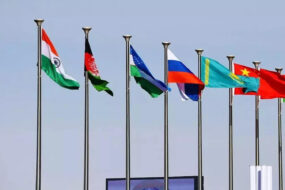
The calm waters of the Taiwan Strait churn with unease. The quiet hum of diplomacy has been replaced by the roar of fighter jets and the rumble of warships as the United States and China engage in a high-stakes standoff over Taiwan. Recent weeks have seen a dramatic escalation of military activity in the region, with both sides flexing their muscles and testing the boundaries of tolerance.
Fueling the fire is China’s increasingly assertive stance towards Taiwan, the self-ruled island Beijing claims as a breakaway province. Recent actions, including a record number of fighter jet incursions into the Taiwanese air defense identification zone, have rattled nerves and triggered alarm bells in Washington and Taipei.
The US, long a staunch ally of Taiwan, has responded with its own show of force. Warships have been dispatched to patrol the sensitive waters around the island, while high-level visits to Taipei reiterate American commitment to Taiwan’s self-defense. This back-and-forth military maneuvering has the world watching with bated breath, fearing a misstep could spark a catastrophic conflict.
Diplomatic efforts are underway to defuse the crisis. Backdoor channels hum with communications, urging both sides to back down. However, trust remains thin, and the ghosts of past tensions linger. Memories of the 1995-96 Taiwan Strait crisis serve as a chilling reminder of the potential for escalation.
At the heart of the dispute lies the unresolved status of Taiwan. Beijing regards it as a renegade province destined for reunification, while Taiwan sees itself as a sovereign democracy. This fundamental difference in perspective fuels the fire, posing a seemingly insurmountable obstacle to peaceful resolution.
The economic stakes are also immense. Taiwan stands as a crucial player in the global semiconductor industry, supplying chips that power everything from smartphones to fighter jets. Disruption to Taiwan’s production could have a devastating ripple effect on the world economy.
The path forward remains shrouded in uncertainty. Can diplomacy prevail, or will the escalating tensions boil over into armed conflict? The answer hangs in the balance, leaving the world watching with a mixture of anxiety and hope for a peaceful resolution.
Conclusion:
The US-China standoff over Taiwan is a complex and volatile issue with global ramifications. Understanding the historical context, the key players’ motivations, and the potential consequences remain crucial as the situation unfolds. While the future remains uncertain, one thing is clear: the world holds its breath, hoping for a diplomatic solution that averts a potentially catastrophic conflict.
Remember, this is just a sample piece. Feel free to customize it further by incorporating specific examples, expert quotes, or historical context to enhance your content and engage your audience.




















